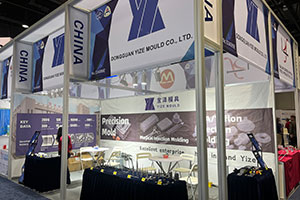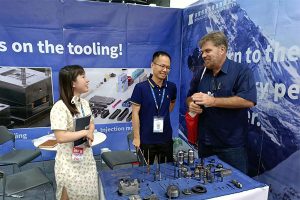Tungsten Carbide Tools: The “Cutting Edge” in Modern Manufacturing
In the wave of modern manufacturing, cutting tools are like the “vanguard warriors” of cutting operations. The performance and quality of these tools directly impact processing efficiency, product quality, and […]
In the wave of modern manufacturing, cutting tools are like the “vanguard warriors” of cutting operations. The performance and quality of these tools directly impact processing efficiency, product quality, and production costs. Tungsten carbide tools, with their unique charm, have become “star players” in the field of mechanical processing. Let’s now comprehensively unveil their mysteries.
Tungsten Carbide Tools: Definition and Unique Identity
Tungsten carbide tools, also known as cemented carbide tools, are high-speed cutting tools made primarily of tungsten carbide and cobalt. Tungsten carbide, as a type of cemented carbide material, combines high hardness, high strength, high wear resistance, high heat resistance, and high corrosion resistance. It is precisely because of these excellent properties that tungsten carbide tools shine in cutting operations and become indispensable “right-hand men” in modern manufacturing.
Our factory business: carbide parts, mold parts, medical injection molds, precision injection molds, teflon PFA injection molding, PFA tube fittings. email: [email protected],whatsapp:+8613302615729.
Outstanding Characteristics: Forging a Legend in Cutting
High Hardness, Cutting Like Butter
Tungsten carbide boasts an incredible hardness, with a Mohs hardness of up to 9, second only to diamond. This allows the cutting edges of tungsten carbide tools to remain sharp during cutting, significantly improving cutting efficiency. They are like swords that can cut through iron as if it were butter, easily tackling various processing challenges.
High Wear Resistance, Long-Lasting Durability
The wear resistance of tungsten carbide is truly remarkable. Even in high-speed cutting and high-load working environments, it can hold its ground and has a long service life, saving enterprises the cost of tool replacement and enhancing production efficiency.
High Heat Resistance, Fearless in High Temperatures
Faced with high-temperature environments, tungsten carbide tools show no fear and maintain stable cutting performance. Whether in high-speed cutting or high-temperature cutting operations, they can handle the task with ease, ensuring the smooth progress of the process.
Good Toughness, Resistant to Impact and Vibration
Don’t assume that because tungsten carbide is hard, it is “brittle”. In fact, it has a certain degree of toughness. During the cutting process, it can effectively resist impact and vibration, avoiding damage caused by external forces and ensuring the stability and accuracy of processing.

Diverse Classifications: Adapting to Various Scenarios
Classification by Grain Size
Tungsten carbide can be classified into ordinary cemented carbide, fine-grained cemented carbide, and sub-fine, ultra-fine-grained cemented carbide based on grain size. The finer the grain, the better the strength and toughness of the material, making it particularly suitable for processing scenarios with high requirements for cutting edge sharpness, like a “tailor-made” sharp tool for precision processing.
Classification by Chemical Composition
From the perspective of chemical composition, tungsten carbide is divided into tungsten carbide-based cemented carbide and titanium carbide-based cemented carbide. Tungsten carbide-based cemented carbide includes tungsten-cobalt (YG), tungsten-cobalt-titanium (YT), and tungsten carbide with added rare carbides (YW). Each type has its own strengths and is suitable for different processing scenarios. Titanium carbide-based cemented carbide, with titanium carbide (Tic) as its main component, excels in processing scenarios with high cutting performance requirements.
Wide Applications: Empowering Multiple Fields
Mainstay in Mechanical Processing
In the field of mechanical processing, tungsten carbide tools are “regulars” in operations such as turning, milling, and drilling. They can easily cut various metal and non-metal materials and also machine complex geometric shapes, meeting the processing needs of different products.
Precision Craftsman in Electronic Component Manufacturing
Electronic component manufacturing has extremely high precision requirements. Tungsten carbide tools, with their high precision and stability, have become important tools for precision processing. Microscopic components in products such as mobile phones and computers cannot be produced without the “fine carving” of tungsten carbide tools.
Quality Shield in the Aerospace Field
The aerospace field has nearly demanding requirements for part precision and quality. Tungsten carbide tools, with their high hardness and wear resistance, have become a “quality shield” for processing in this field, ensuring that part processing meets high standards.
Pioneer in Mine Exploration
In harsh environments such as geological exploration, well-drilling, and mine drilling, tungsten carbide tools can still maintain stable cutting performance, acting as a “pioneer” for mine exploration and geological research, and facilitating resource development.
Maintenance Tips: Extending Tool Life
Pre-use: Lubrication First
Before using tungsten carbide tools, lubrication treatment is essential. This can effectively reduce wear and friction between the tool and the workpiece, providing a “smooth sailing” for the tool’s efficient work and extending its service life.
Post-use: Cleaning and Rust Prevention
After processing, promptly clean and apply rust prevention treatment to the tungsten carbide tools to keep their surfaces clean and avoid rust and corrosion, like putting on a “protective coat” for the tools.
Storage: Dry and Ventilated
Tungsten carbide tools should be stored in a dry and ventilated environment to prevent oxidation, rust, and a decrease in hardness. Only by providing a good “living environment” for the tools can they always be in top condition.
Summary
Tungsten carbide tools, as high-performance cutting tools, hold a pivotal position in modern manufacturing. Their unique characteristics, diverse classifications, and wide applications provide ideal solutions for different processing scenarios. Meanwhile, proper maintenance methods can keep tungsten carbide tools in excellent cutting performance, creating greater value for enterprises.






